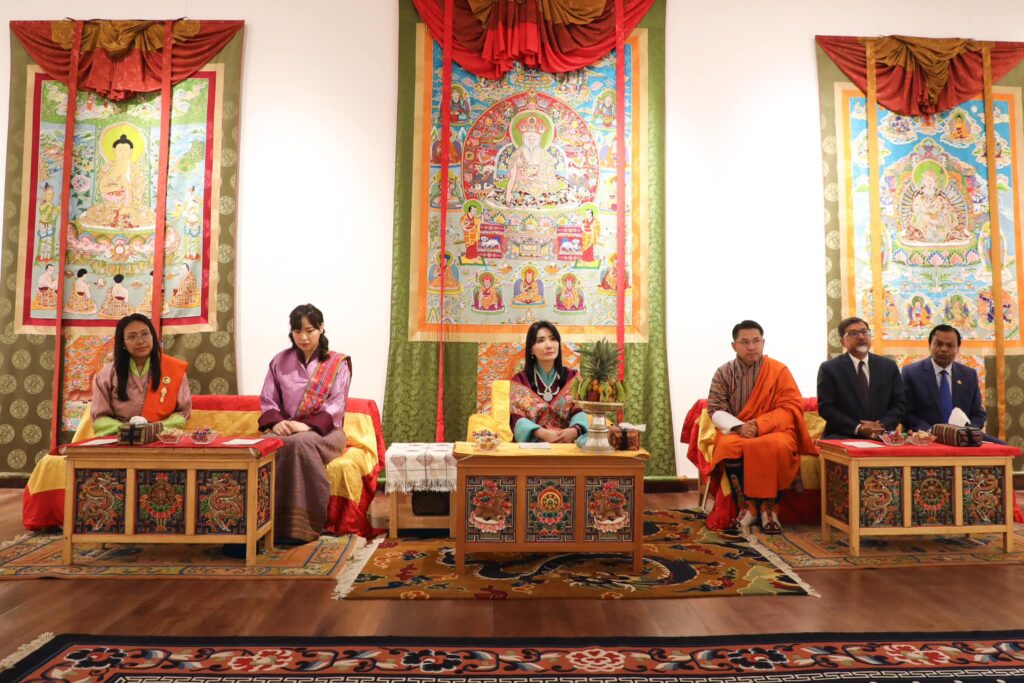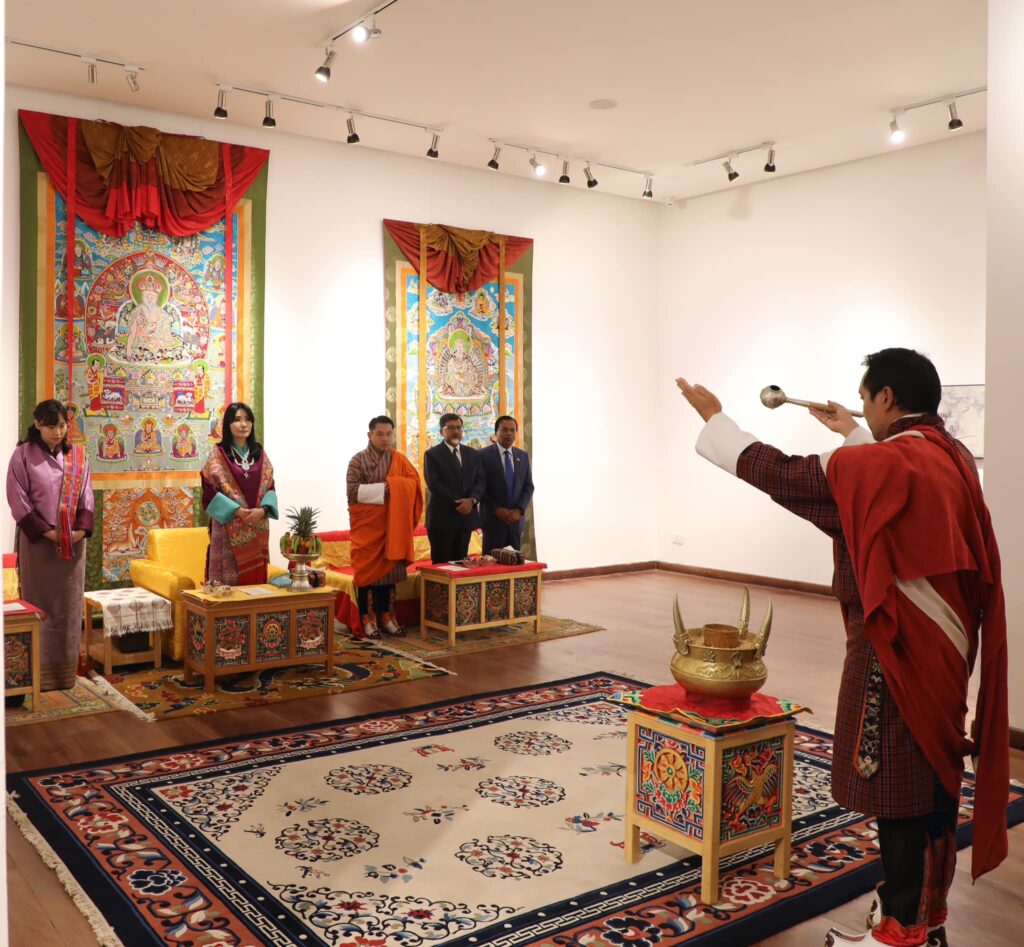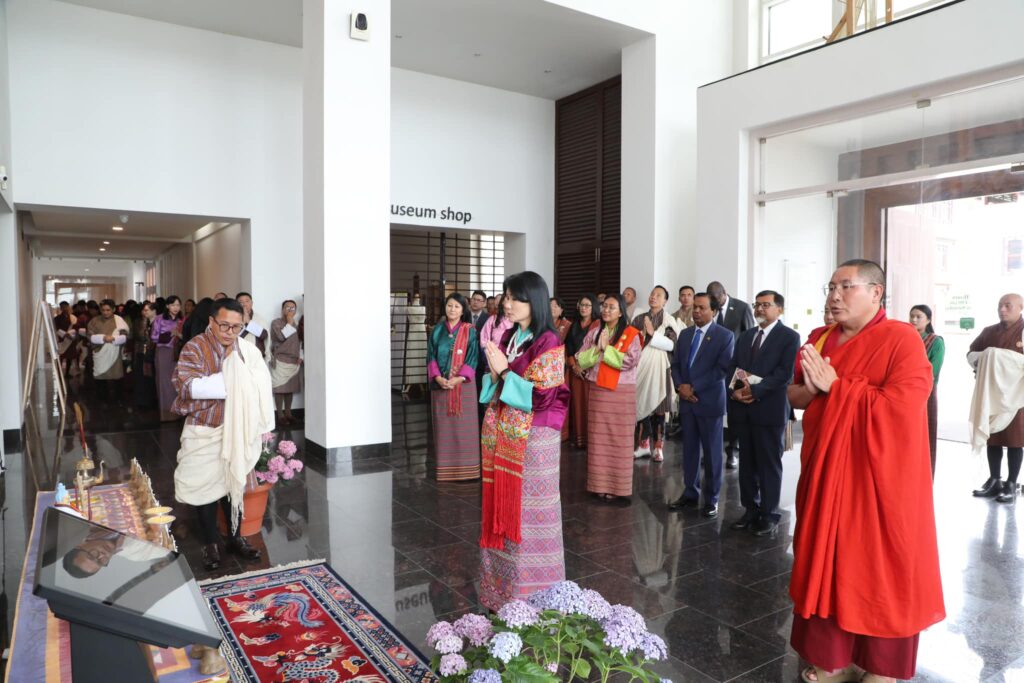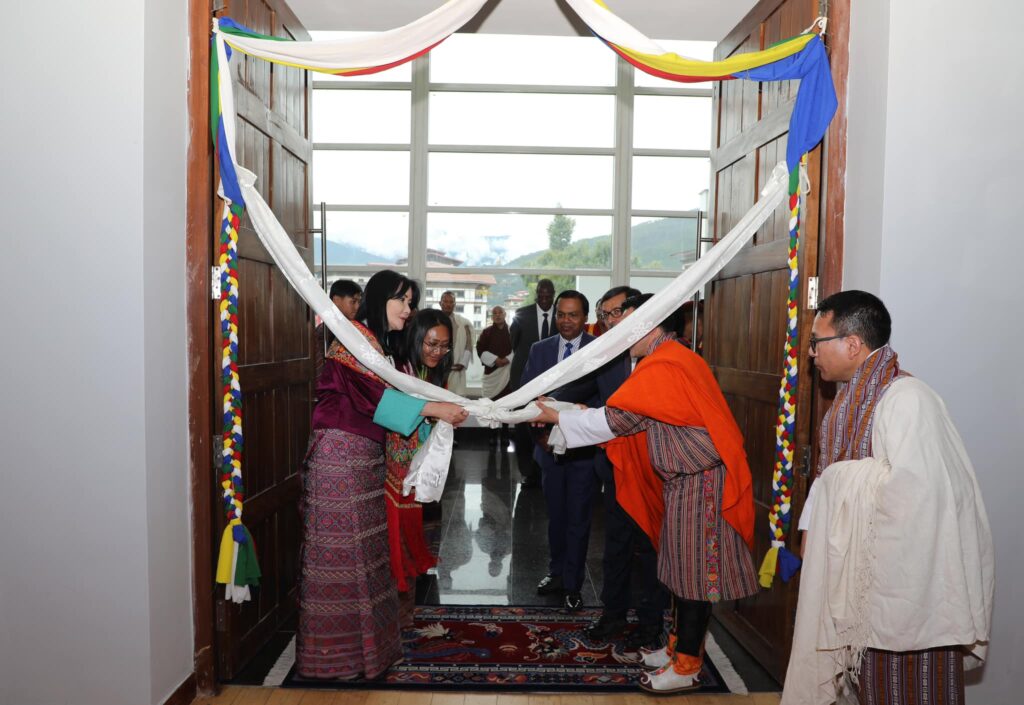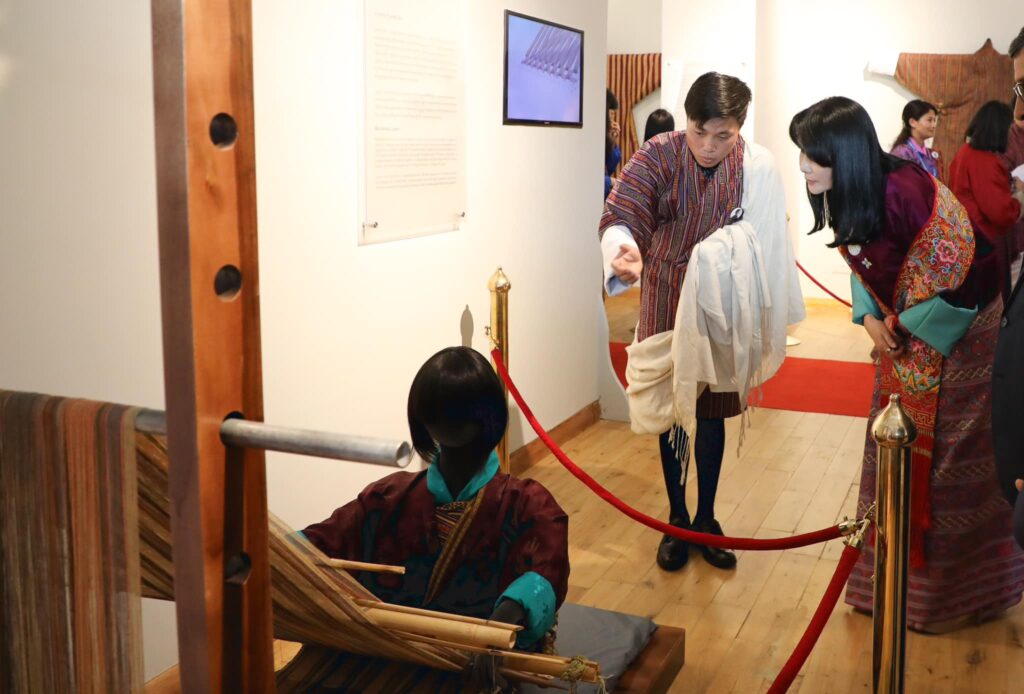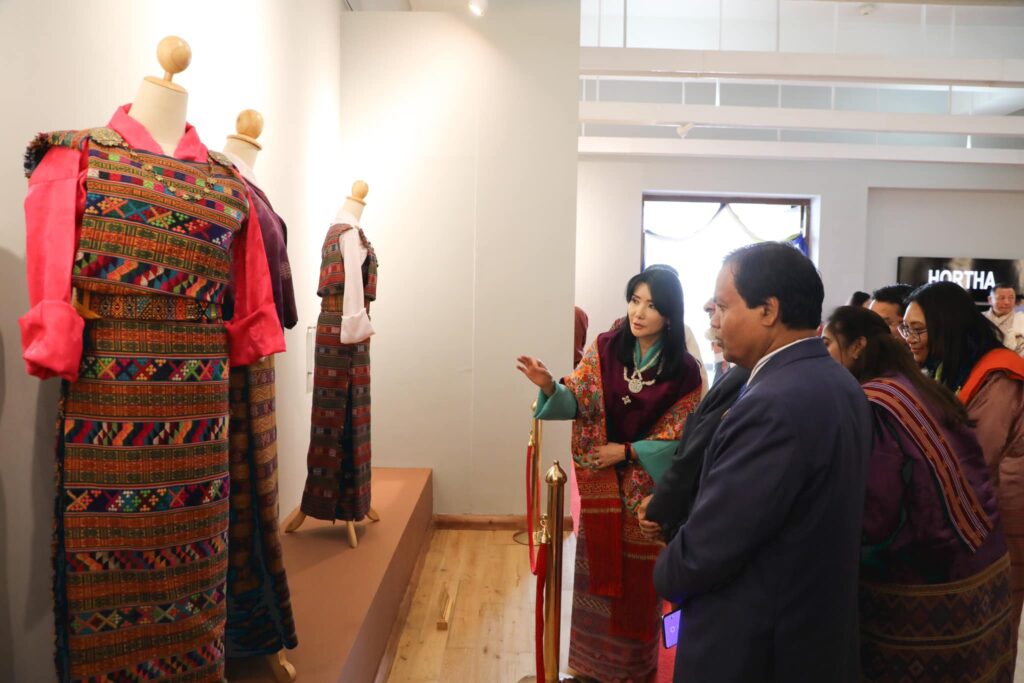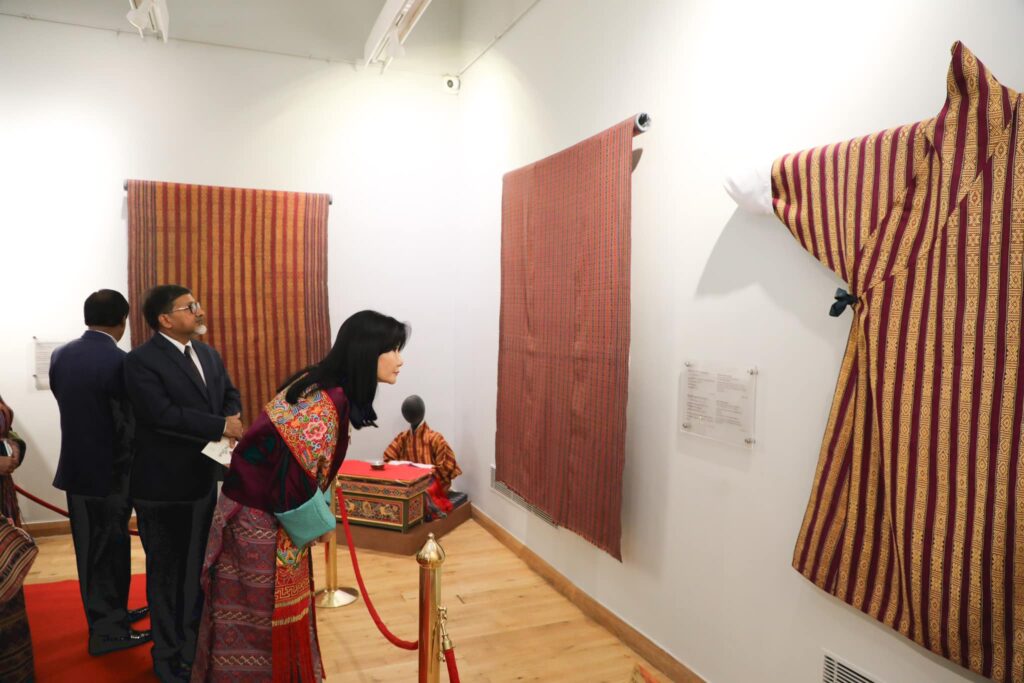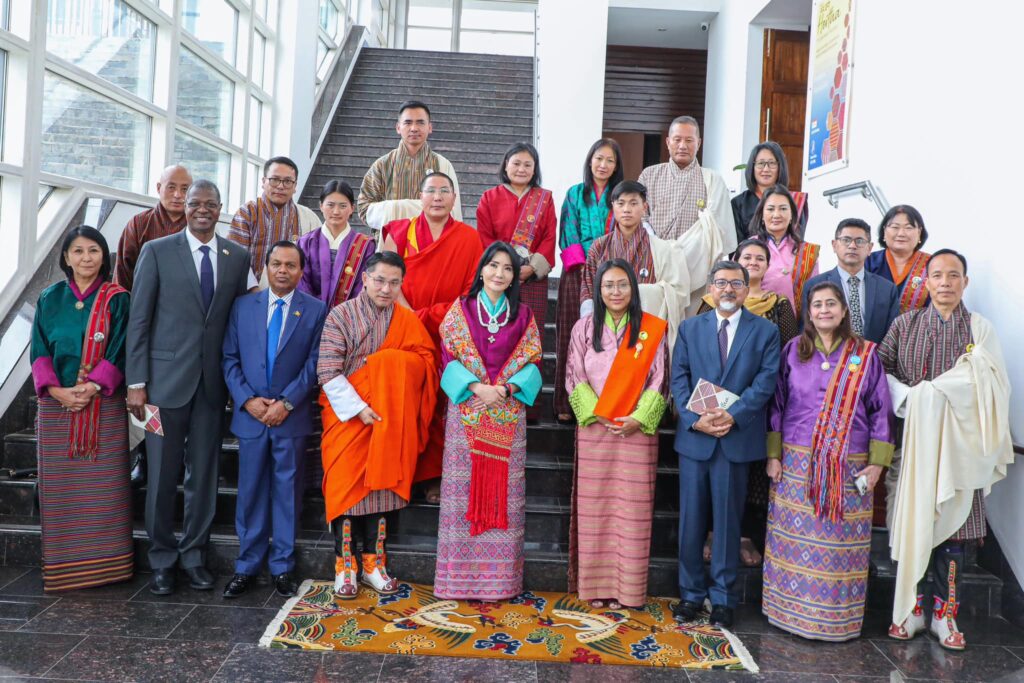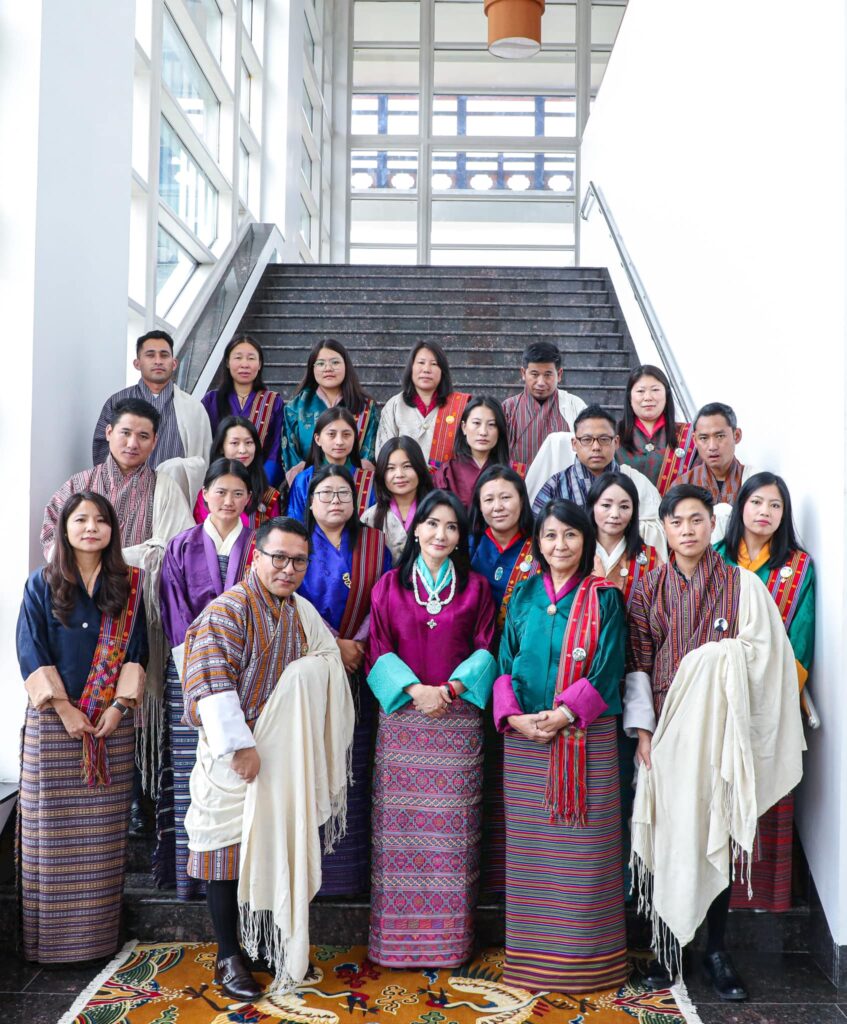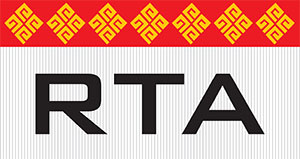“Hortha: The Supplementary Warp Pattern” exhibition inaugurated at the RTA
Her Majesty the Royal Patron Gyalyum Sangay Choden Wangchuck, along with Their Excellencies and other distinguished guests inaugurated the new exhibition titled “Hortha: The Supplementary Warp Pattern” at the lower gallery of the Textile Museum. The exhibition catalogue was also launched during the inauguration.

The catalogue features detailed information about the Hortha pattern, including its various types, intricate designs, its evolution over the years, and photographs and descriptions of the displayed artifacts.
Among Bhutan’s stateful hand-woven textiles, the Hortha, notably from the village of Radhi in eastern Bhutan, stands out. Hortha refers to fabrics with supplementary-warp pattern bands. These intricately patterned fabrics are made of cotton, wild silk, and cultivated silk. Horthaconsists of alternating bands of plain weave (pang) and supplementary-warp patterning (hor) on a plain weave ground, with five distinct and ancient colour schemes. The warp patterns are created using alternate and supplemental warp threads; the weft threads are not changed in this pattern technique. Supplementary-warp patterns are double-sided, which means they are duplicated as mirror images on the opposite side.
The Hortha pattern is distinguished by its versatility and cultural significance, with the quantity of cross-hatches defining its applicability for different situations. Simpler designs with fewer crosshatches are commonly used as everyday uniforms. In contrast, more complicated patterns with a greater number of cross-hatches are reserved for special occasions, making them the preferred cloth during important ceremonies and celebrations. This versatility emphasises the Hortha’s role in Bhutanese society, expressing both daily pragmatism and ceremonial majesty.
